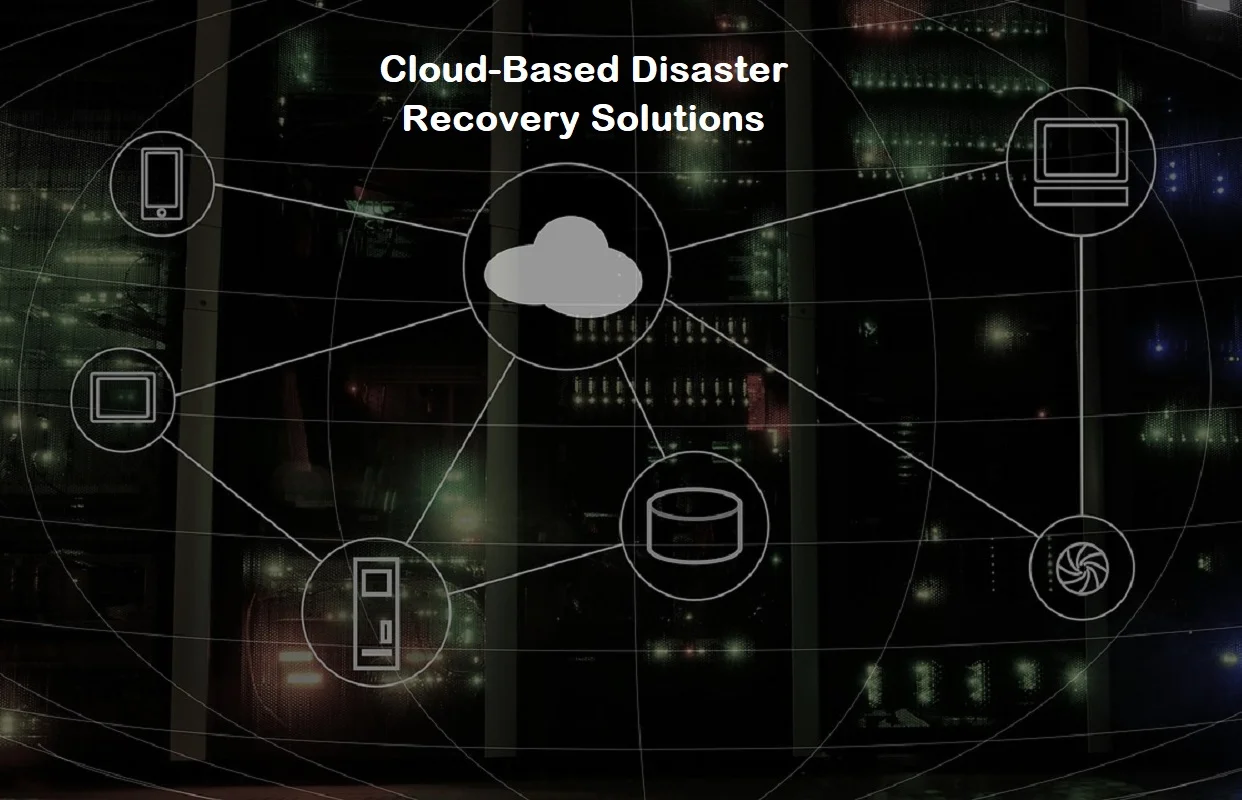Cloud-based disaster recovery solutions have become increasingly popular in recent years, as businesses seek to protect their data and IT infrastructure from unexpected events that could cause downtime or data loss. These solutions offer a range of benefits, including reduced costs, improved reliability, and greater flexibility. In this article, we will explore what cloud-based disaster recovery solutions are, how they work, and the key benefits they offer to businesses of all sizes. We will also discuss some of the factors that organizations should consider when selecting a cloud-based disaster recovery solution, as well as some best practices for implementing and managing such solutions.
What Is Cloud-Based Disaster Recovery “Only for Students”
Cloud-based disaster recovery (DR) is a type of disaster recovery solution that uses cloud infrastructure and services to protect an organization’s critical data, applications, and IT systems in the event of a disaster or outage. In traditional disaster recovery solutions, businesses would typically replicate their data and IT systems to a secondary data center, which is usually located in a different geographic region from the primary site. However, this approach can be costly and complex to implement and maintain.
Cloud-based DR, on the other hand, provides an alternative approach to traditional disaster recovery by leveraging the cloud’s scalability, flexibility, and cost-effectiveness. With cloud-based DR, businesses can replicate their data and IT systems to a cloud provider’s infrastructure, eliminating the need for a secondary data center and the associated costs of hardware, software, and personnel.
Cloud-based DR solutions typically offer a range of features and capabilities, including automated failover and failback, data replication, backup and recovery, and disaster recovery testing and validation. These solutions can be tailored to meet the specific needs and requirements of an organization, whether it’s a small business or a large enterprise.
Cloud-Based Disaster Recovery Solutions
To achieve the fastest possible recovery of the entire IT infrastructure after a failure, organizations can use various solutions. Depending on conditions, recovery may take from several minutes to several seconds. Much depends on the solution used. Here we will talk about these solutions.
1. Backup as a Service
BaaS, backup as a service, is an approach that involves the creation of several backup copies of data from which it will be possible to restore in case of damage or inaccessibility of the working copy. Instead of creating backups with the help of an on-premise IT department, when using BaaS, systems are connected to a private, public, or hybrid cloud from a provider.
This technology used for disaster recovery works through “agent” applications that collect data to create a backup in the cloud. The data must be encrypted and compressed. The time interval for creating backups is configured for the needs of a particular company.
The advantage of BaaS is that storing one of the backups outside the local infrastructure or other main site allows you to recover even with a complete loss of data. True, you will have to deploy a new infrastructure. In management, this solution is easier when compared with other services. In addition, the maintenance and management of storage and backups can be entrusted to a cloud provider. Here we have shortlisted 4 most popular BaaS services for you:
a) Amazon Web Services (AWS) Backup
AWS Backup is a fully managed backup service that enables businesses to back up their data to the AWS cloud. AWS Backup offers automated backup and recovery, centralized management, and integration with other AWS services.
b) Microsoft Azure Backup
Azure Backup is a cloud-based backup service that enables businesses to back up their data to the Microsoft Azure cloud. Azure Backup offers automated backup and recovery, easy management, and support for hybrid environments.
c) Cloud4Y’s Backup Services
Cloud4Y’s Backup as a Service will be useful for companies that have outgrown the traditional backup method into their own storage and need an expensive upgrade of their software and hardware. Organizations lacking the resources to create backups locally can also opt to outsource backup and recovery, ensuring they have normal access to their databases or restoring the system from a backup in the event of a failure.
d) Google Cloud Backup and Recovery
Google Cloud Backup and Recovery is a cloud-based backup service that enables businesses to back up their data to the Google Cloud Platform. Google Cloud Backup and Recovery offers automated backup and recovery, secure data protection, and integration with other Google Cloud services.
2. Backup & Replication
Data replication assumes that at any given time you have a copy of the virtual machine ready to run. The solution ensures the constant availability of the required number of VMs in a VMware vSphere or other vendor environment. Business-critical Microsoft applications such as SQL Server, as well as access control systems, electronic cash registers, and other business applications, are backed up. The company ensures that it is prepared for emergencies and immediately restores the system in the event of failures, ransomware attacks, etc.
If one of these critical systems fails, it can be made available again in just a couple of minutes. Often, users don’t even notice the downtime. The Backup & Replication solution used by popular companies allows you to restore individual application objects or even entire virtual machines directly from the main storage snapshots.
This solution is useful for companies that need to maintain the continuity of processes and work effectively even in case of serious failures in the main infrastructure. Why is a local backup not enough? By storing backups on the main site, you risk losing them if something happens to the site. Some of the most popular backup and replication services available in the market today include:
a) Veeam Backup and Replication
Veeam is a leading provider of backup and replication solutions that offers businesses a comprehensive data protection solution for virtual, physical, and cloud-based environments. Veeam Backup and Replication provides automated backup and replication, recovery verification, and orchestration capabilities, enabling businesses to quickly recover their critical applications and data in the event of a disaster.
When creating a replica, Veeam Backup & Replication copies the VM image and registers its copy on the target ESX(i) host. Subsequently, only those data blocks that have been changed are copied. And a new restore point is created, which allows you to roll back the VM to the last saved state. The number of recovery points can be different; this is specified in the storage policies. Thanks to deduplication and data compression technologies, network bandwidth is regulated, and it is not overloaded due to the replication process.
b) Commvault Backup and Replication
Commvault is a popular backup and replication solution that provides businesses with a comprehensive data management platform. Commvault Backup and Replication provides automated backup and replication, data encryption, and deduplication capabilities, ensuring that businesses can protect their critical data from cyber threats and data loss.
c) Acronis Cyber Backup
Acronis Cyber Backup is a unified backup and recovery solution that provides businesses with data protection, replication, and recovery capabilities. Acronis offers automated backup and recovery, continuous data protection, and integration with leading cloud platforms.
d) Veritas Backup Exec
Veritas Backup Exec is a backup and recovery solution that enables businesses to protect their data, applications, and systems. Veritas offers backup and recovery, replication, and disaster recovery capabilities, along with cloud integration and automation.
3. MetroCluster
A MetroCluster is a cluster distributed among several sites within a city. This solution is often referred to as a disaster-tolerant cloud. It is more expensive, but it helps to solve problems with power outages, fire, disasters, human error, and the activities of the investigating authorities in the data center.
MetroCluster solutions typically consist of two geographically-dispersed storage clusters, each located in a different data center. These clusters are interconnected with a high-speed, low-latency network, and data is mirrored between the clusters in real time. This provides continuous availability and automatic failover capabilities in the event of a data center outage or disaster. Some popular MetroCluster services include:
a) NetApp MetroCluster
NetApp MetroCluster is a disaster recovery solution that is designed to provide continuous availability and zero data loss for business-critical applications. It offers automated failover and recovery capabilities, as well as data protection and encryption.
b) Dell EMC VPLEX
Dell EMC VPLEX is a disaster recovery solution that provides continuous availability and zero data loss for mission-critical applications. It offers automated failover and recovery, as well as data protection and encryption.
c) HPE 3PAR Peer Persistence
HPE 3PAR Peer Persistence is a disaster recovery solution that provides continuous availability and zero data loss for business-critical applications. It offers automated failover and recovery, as well as data protection and encryption.
Conclusion
Today businesses are facing an increasing number of threats to their IT infrastructure, ranging from hardware failures to natural disasters and cyber-attacks. To mitigate these risks, businesses need to have effective disaster recovery and business continuity solutions in place.
Overall, businesses should carefully evaluate their disaster recovery and business continuity needs and choose a solution that best fits their requirements. By doing so, they can ensure that their critical data and applications are protected and that they can continue to operate in the event of a disaster.
 SlushWeb Bringing Facts to Light
SlushWeb Bringing Facts to Light



